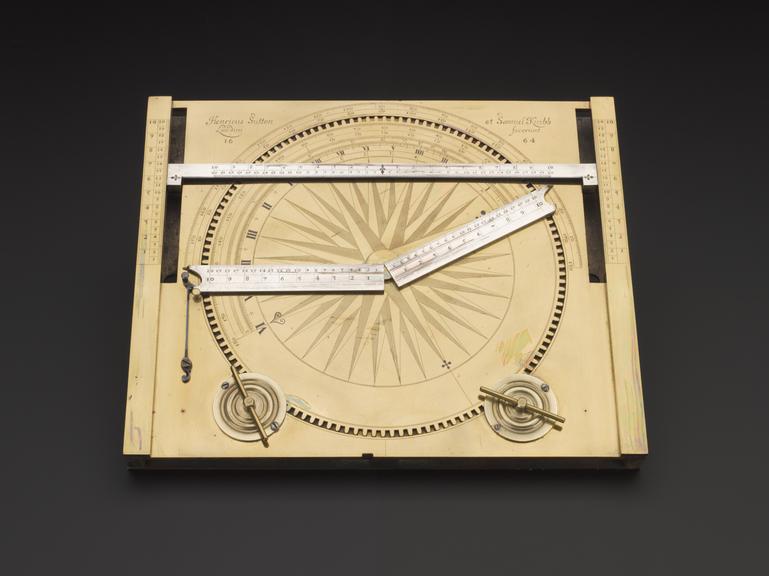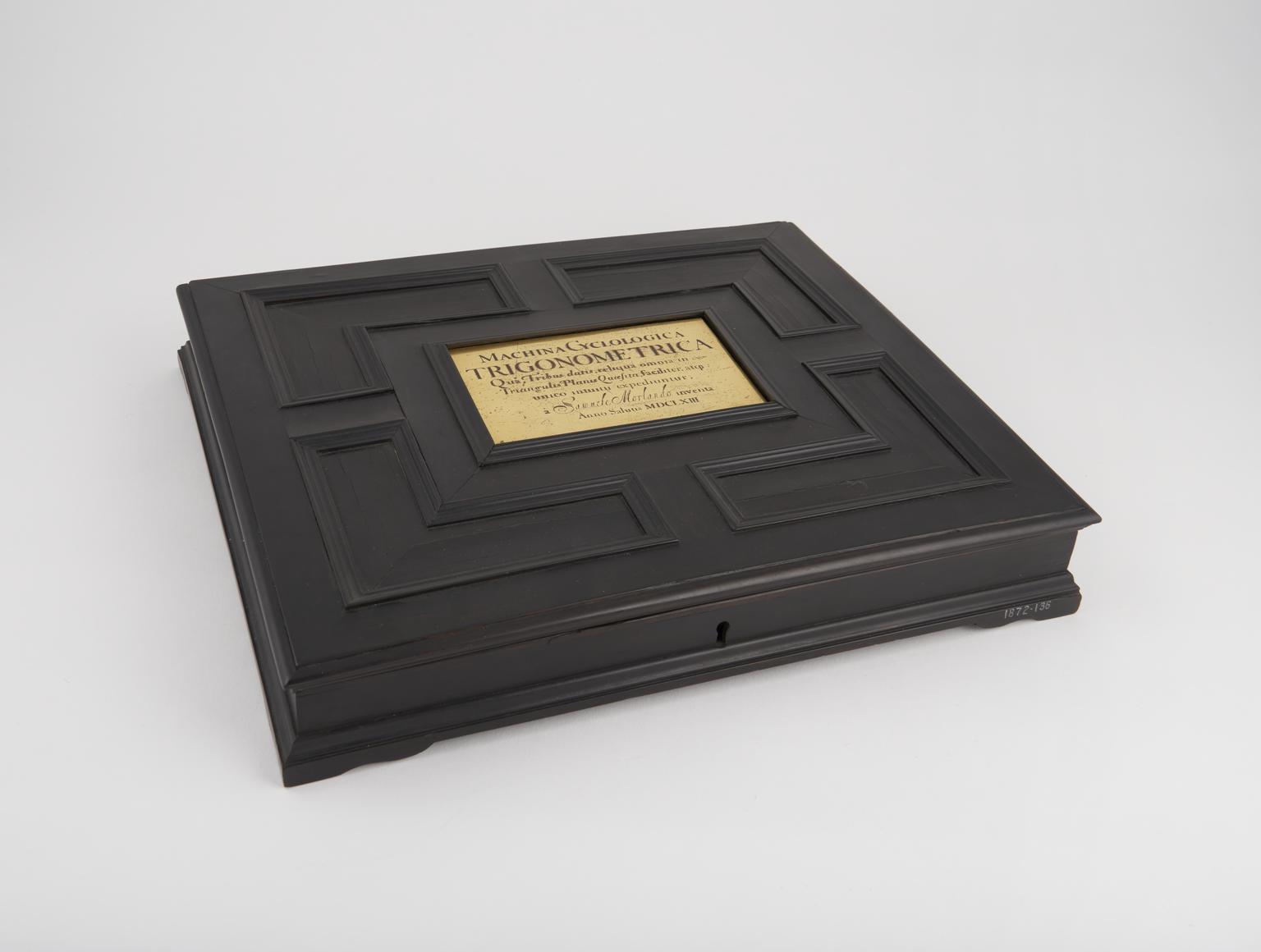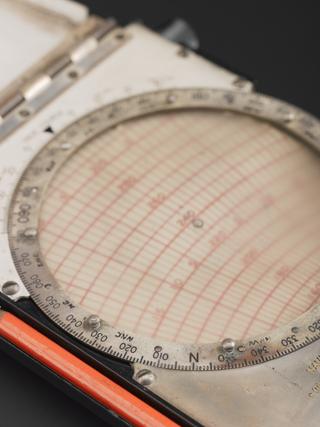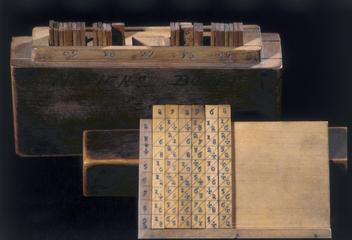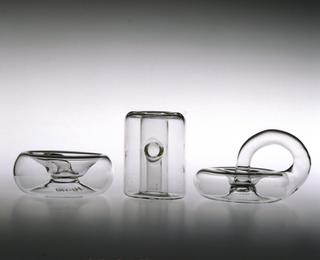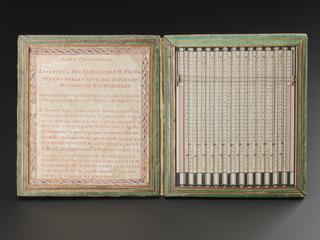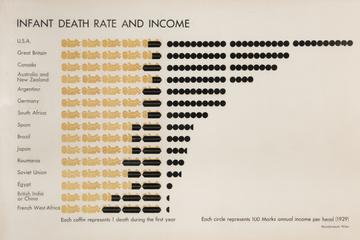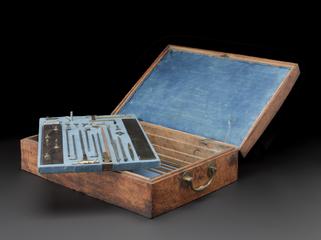Calculating machine invented by Sir Samuel Morland
Calculating machine invented by Sir Samuel Morland, 1663, adapted to trigonometrical computation. Made by Henry Sutton and Samuel Kribb, London, 1664.
More
This machine was used to simplify calculations involving triangles, using a mathematical
technique known as trigonometry. Surveyors rely extensively on this practice as it enables
huge areas to be surveyed using the lengths and angles of triangles.
The operator used the machine by ‘drawing’ the problem on it. It contained three rules
which could be moved using dials to make a triangle of the required size. Angles or lengths
could then be read off directly. However, it was expensive and did not catch on.
- Measurements:
-
Overall: 25 mm x 290 mm x 240 mm, 4.792 kg
- Materials:
- complete , brass , iron and steel (metal)
- Object Number:
- 1872-136 Pt1
- type:
- calculating machine








